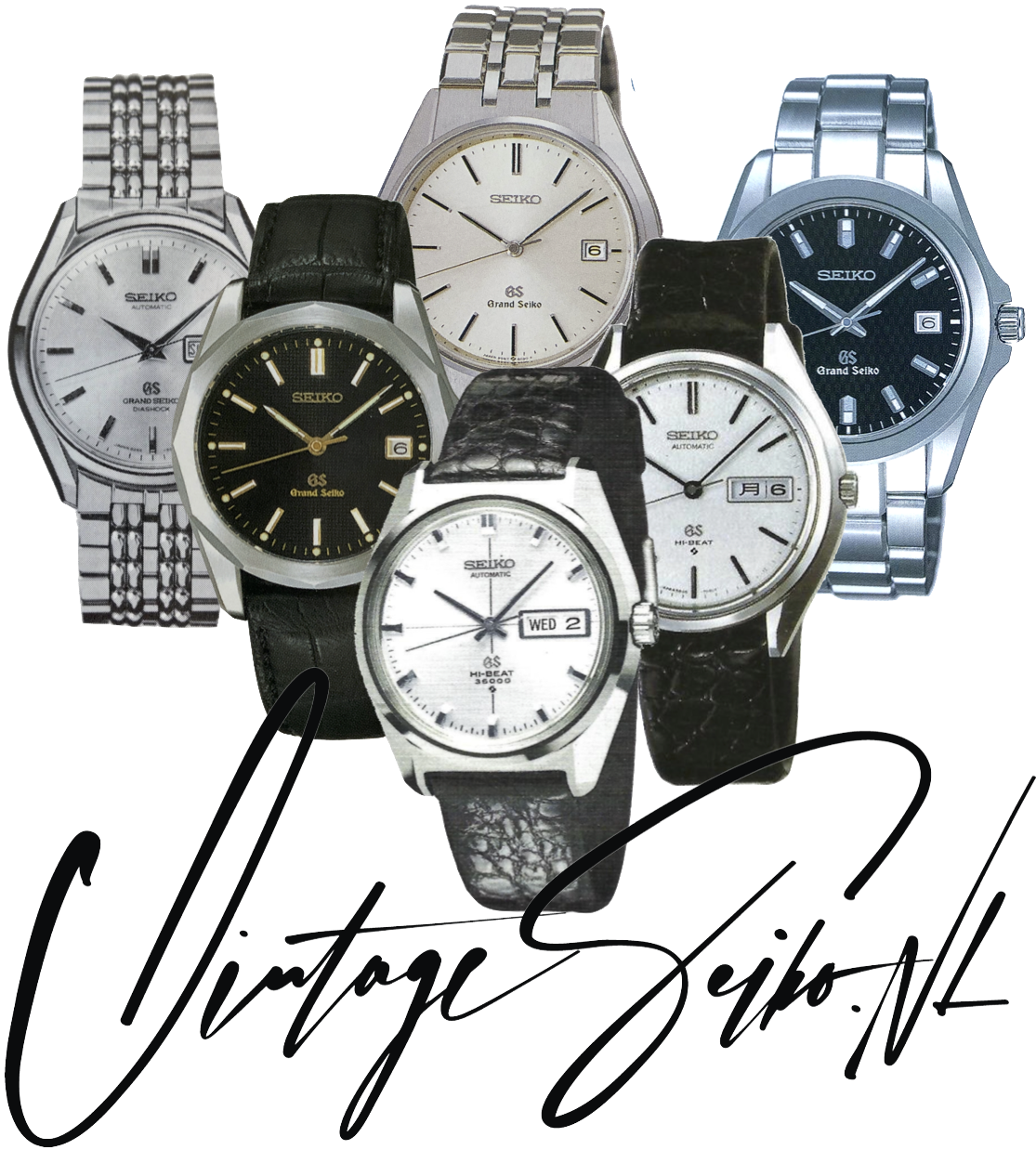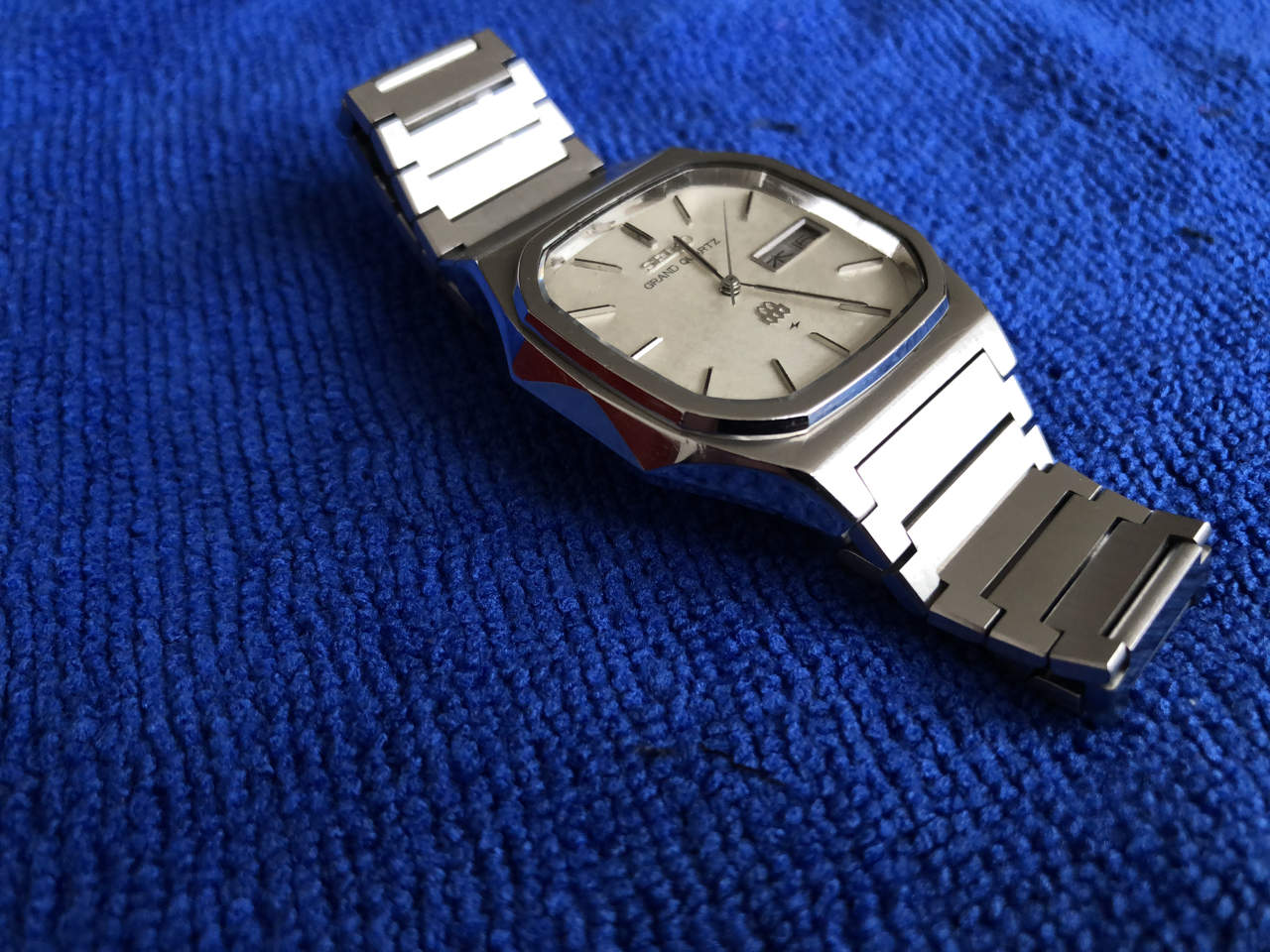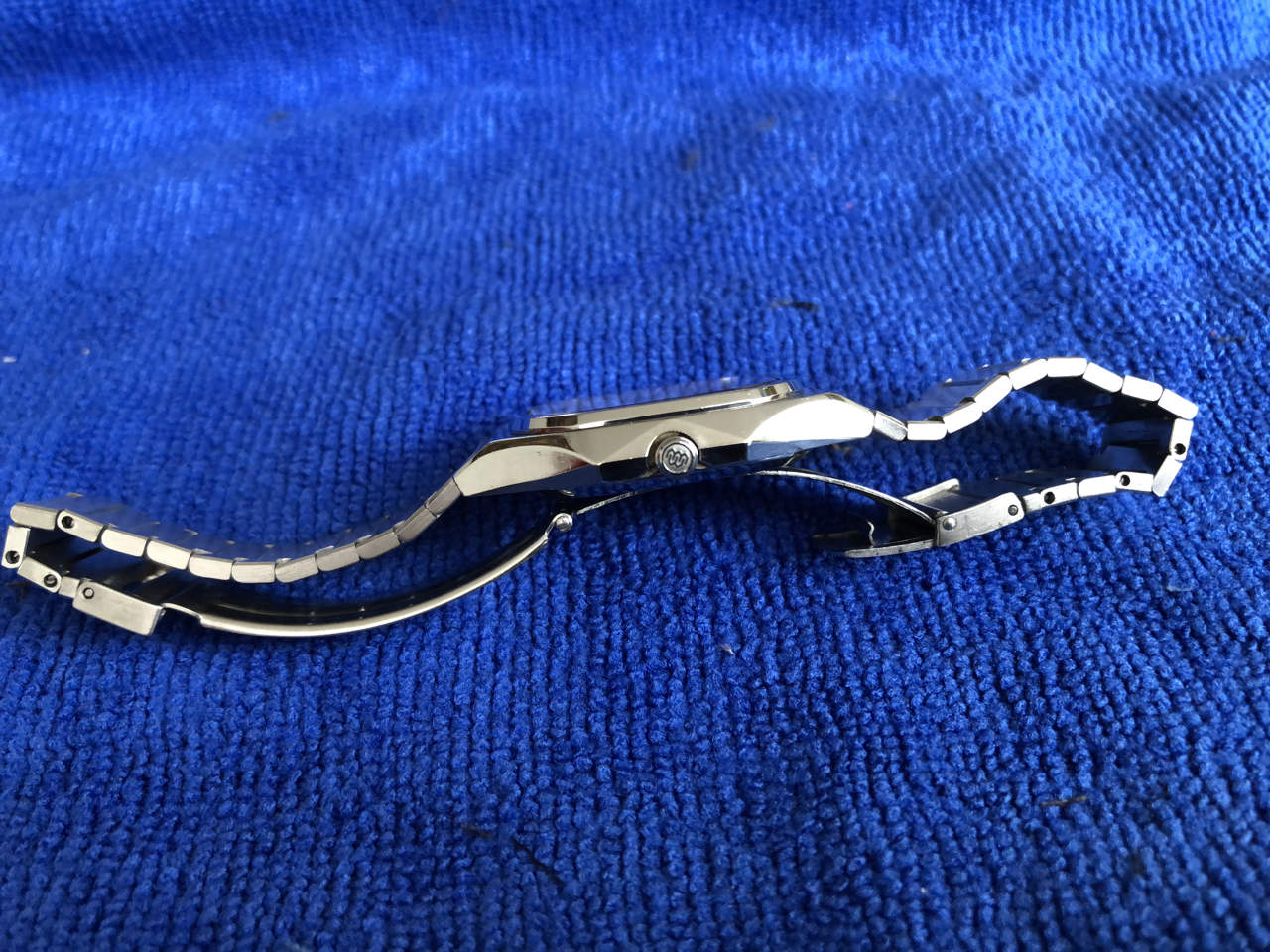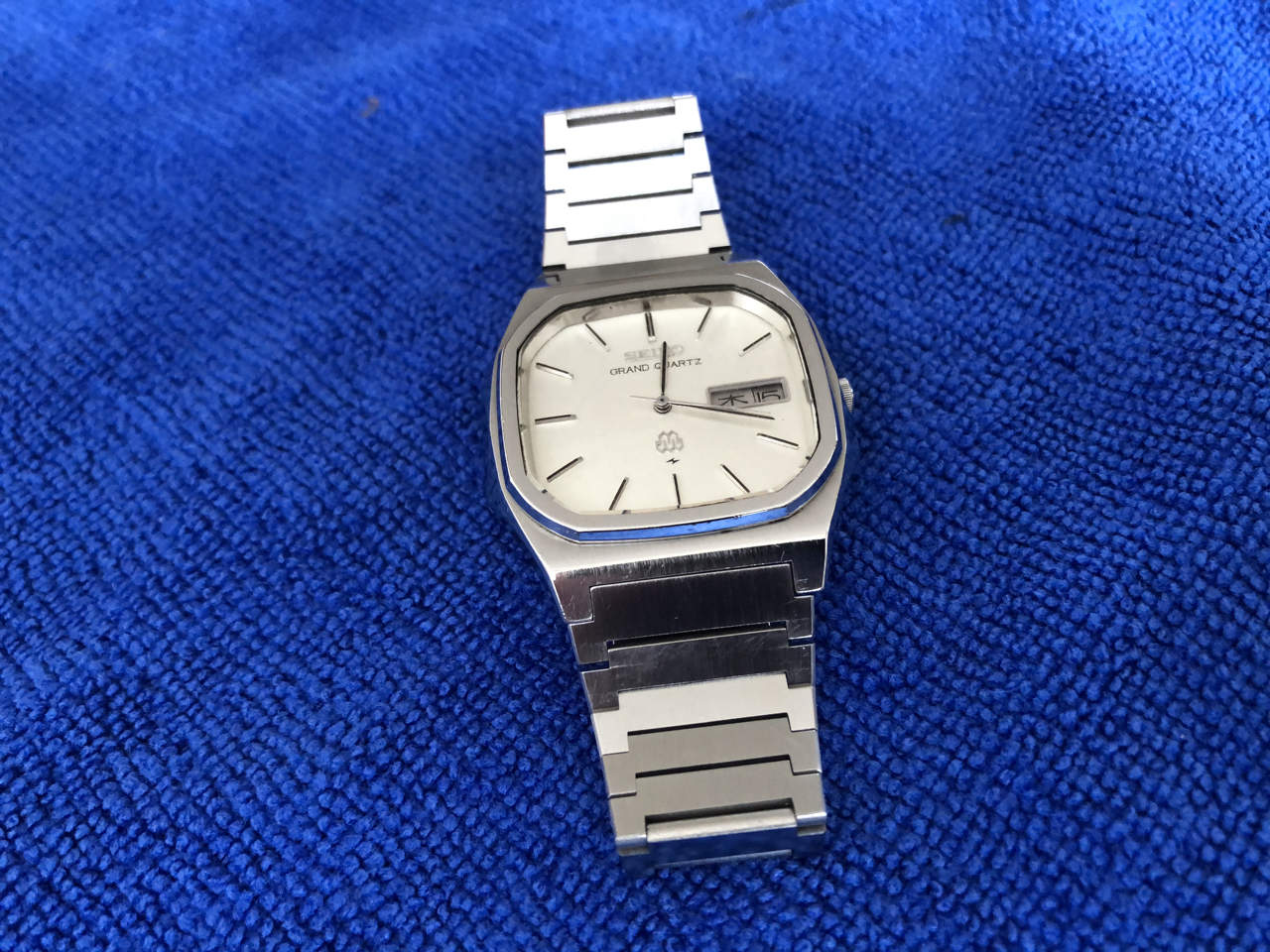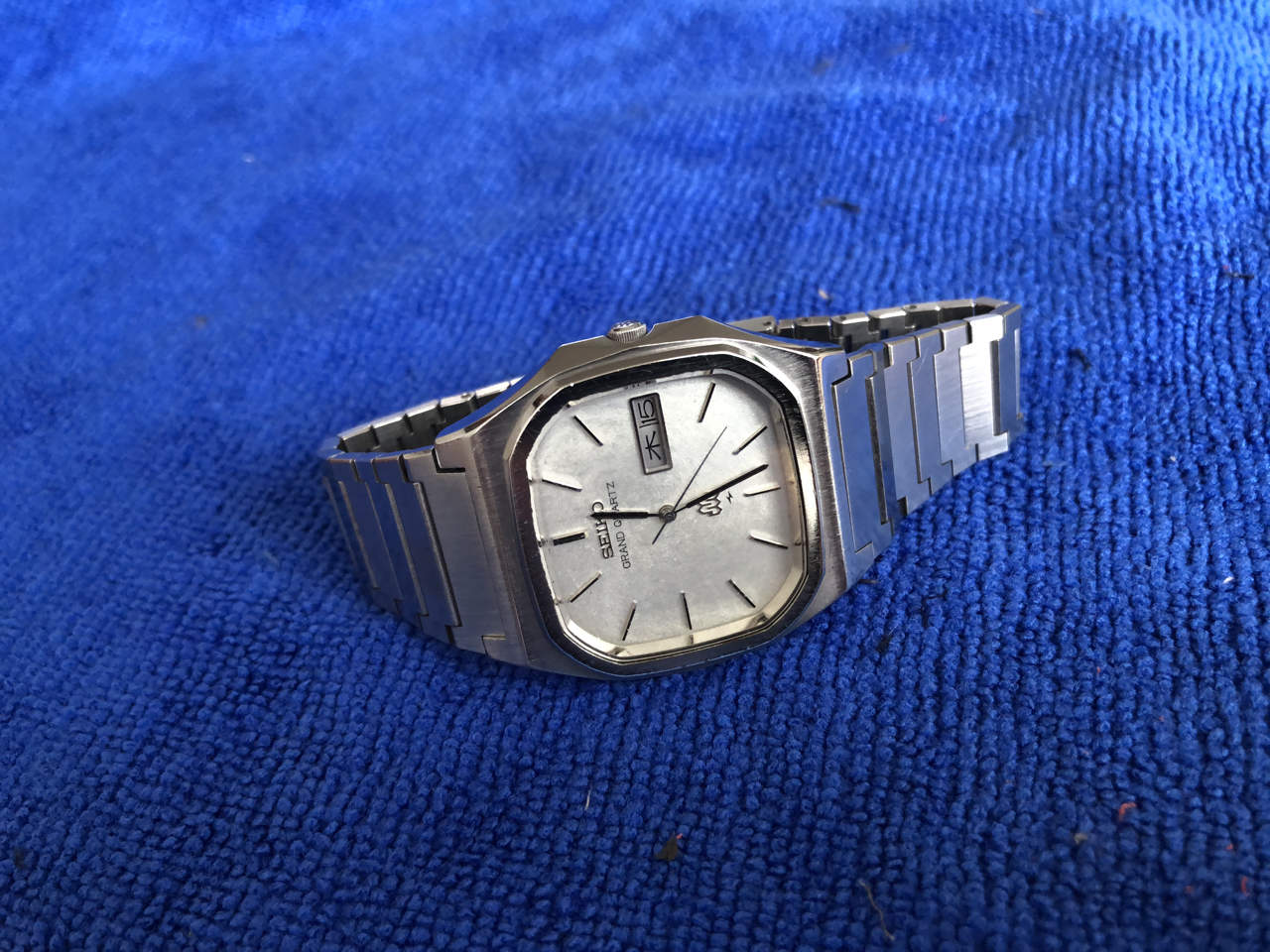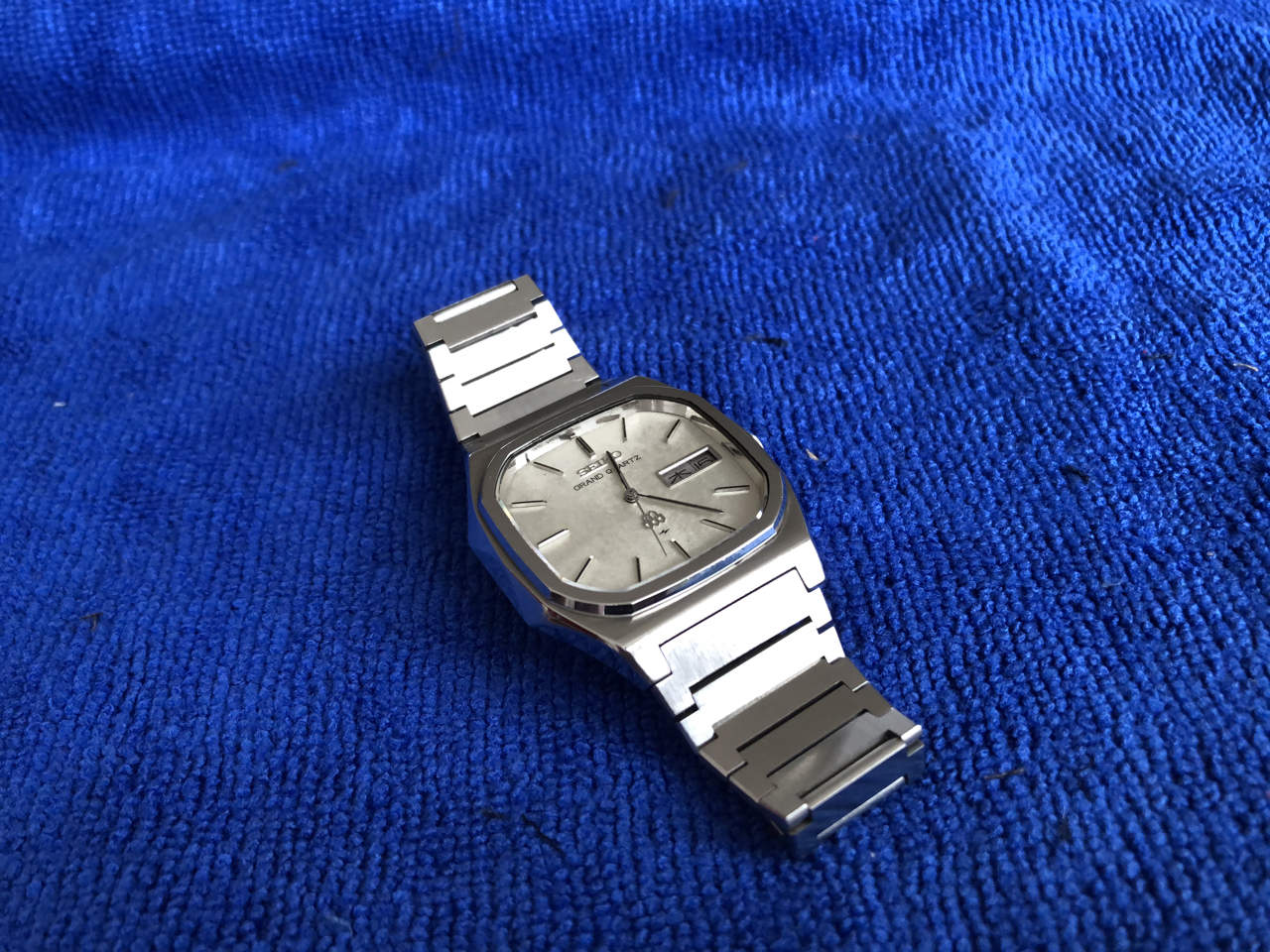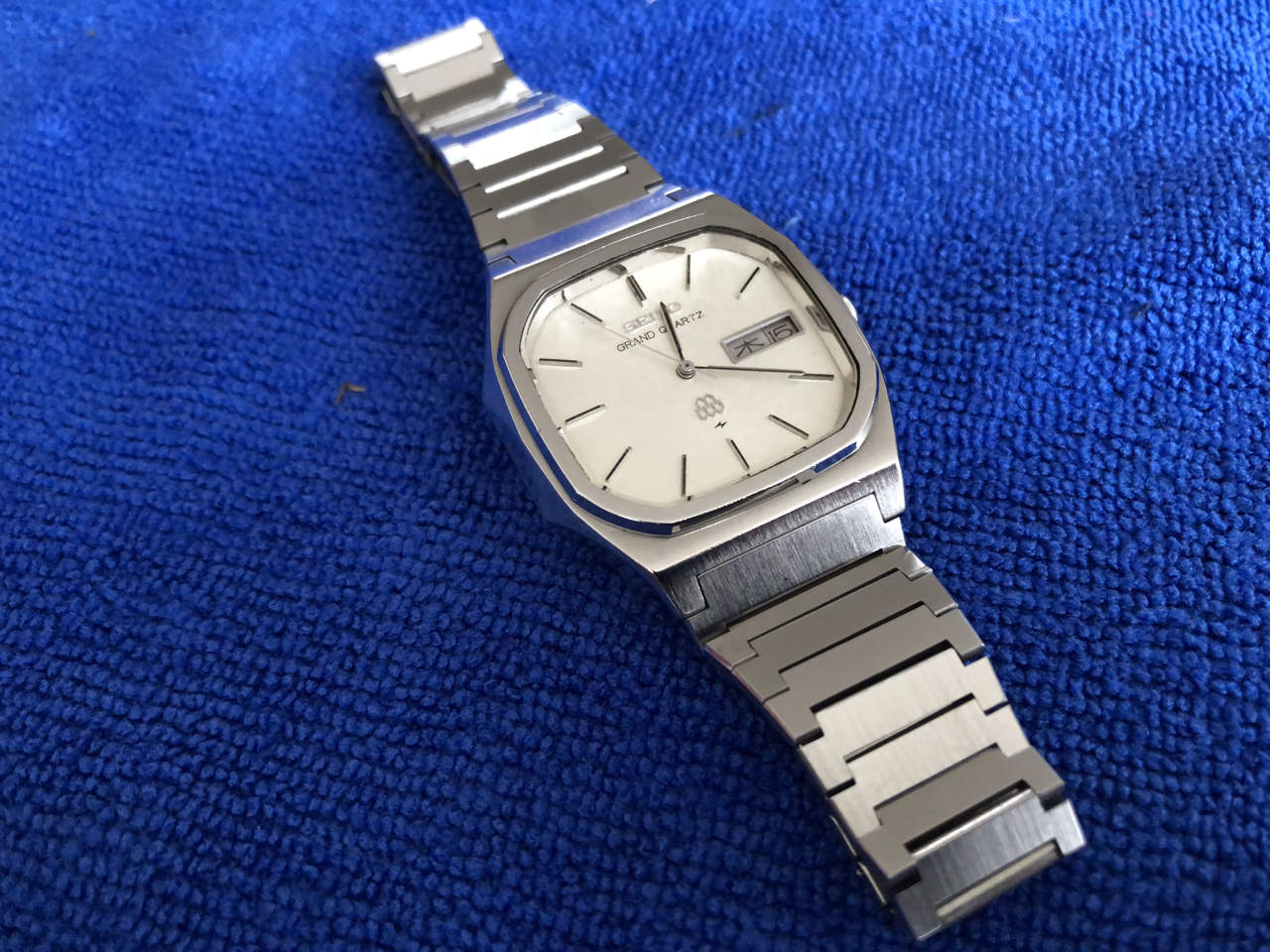
Seiko Grand Quartz 9256-5000 (sold)
€ 235.00
Sold out
Category
Grand Quartz
Tags
1979
9256
Grand Quartz
Steel
It is probable that the entire production of the Grand Quartz line spans a decade, 1975-1985. For caliber 9256 however just 3 years. All of these watches have the strong lines and angles typical of the Seiko productions of the Seventies. The dial has the indices and the Seiko logo both applied and at six o'clock there is the "double honeycomb" logo, indicating the presence of a "twin quartz" caliber inside.
Manufacture: Seiko
Model: Grand Quartz
Reference: 9256 5020
Movement: Quartz at -10 Seconds PY
Serial No.: 93xxxx
Case: Tanaka design 37x41x09mm (without crown!)
Crystal: Acrylic
Dial: Cream Snow
Bracelet: XBB230 180 mm around
Lugs: 19mm
Production: 03-1979
Condition: 07 - Good: very clean, some light scratches case & crystal, easily polished
Service: Not necessary
Box: No
Papers: No
The Seiko Grand Quartz first appeared with four models in the 1975 Japanese Domestic Market (JDM) catalogue, in white and yellow gold only. The price ranged between 460,000 (leather band) and 1,350,000 Yen (bracelet). The automatics of Grand Seiko comparatively all sold under 500,000 Yen.
When quartz was well established, at the end of the Seventies, the Seiko 1978 JDM catalogue showed the twin quartz caliber for the first time: the Superior line, caliber 9983. This was a movement with an accuracy rating of 5 seconds per year, among the best Seiko has ever produced.
At that time, the Grand Quartz line from Suwa benefits from this twin quartz innovation with the 9943 and the 9940 caliber - retiring the caliber 4843 that had just been selling for two years (1976-1978). The Grand Quartz line from Daini benefits as well, presenting in 1978 this expensive mysterious caliber, the 9256 - which was last seen in 1981. It seems to have used two quartz oscillators with the same frequency rather than the two frequency approach of the 9943 in a technology called the JHQ system. The watch would cost you about 1380 dollars nowadays for the superbly dialed 9256-5010 model. Grand Seiko money indeed.
With an accuracy rated at 10spy - the same as today's Grand Seiko cal. 9F - the 9256 (and the 9940) is shown for the first time in the JDM 1979 V2 catalogue, on page 7 priced at 110.000 Yen or 1380 dollars. There's only one other reference with the cal. 9256 in the catalogue and it is on the same page, the 9256-5000 with grey dial, setting you back 100,000 yen. There are few changes in the next two years, in 1980 some new cheaper variations (apparently already retired in 1981), until finally 1985, after which both the Superior and Grand Quartz lines aren't present at all anymore in the catalogue - moreover, there are no other models with twin quartz calibers on it.
In 1986, one might say, Seiko went crazy, introducing scores of goofy product lines like “Isnt” and “Off”, listing it right after each other in the catalogue; "Seiko isn’t off"… seriously?
Back to caliber 9256. It is probable that the entire production of the Grand Quartz line spans a decade, 1975-1985. For caliber 9256 just 3 years. All of these watches have the strong lines and angles typical of the Seiko productions of the Seventies. The dial has the indices and the Seiko logo both applied and at six o'clock there is the "double honeycomb" logo, indicating the presence of a "twin quartz" caliber inside.
To conclude, as is convenient with seventies style quartzes, the caseback has a battery hatch and shows that the production date of this very early model was March 1979. Inside the battery hatch we can find the trimmer for the fine tuning of the movement. The crown is also signed with the double honeycomb.
Manufacture: Seiko
Model: Grand Quartz
Reference: 9256 5020
Movement: Quartz at -10 Seconds PY
Serial No.: 93xxxx
Case: Tanaka design 37x41x09mm (without crown!)
Crystal: Acrylic
Dial: Cream Snow
Bracelet: XBB230 180 mm around
Lugs: 19mm
Production: 03-1979
Condition: 07 - Good: very clean, some light scratches case & crystal, easily polished
Service: Not necessary
Box: No
Papers: No
The Seiko Grand Quartz first appeared with four models in the 1975 Japanese Domestic Market (JDM) catalogue, in white and yellow gold only. The price ranged between 460,000 (leather band) and 1,350,000 Yen (bracelet). The automatics of Grand Seiko comparatively all sold under 500,000 Yen.
When quartz was well established, at the end of the Seventies, the Seiko 1978 JDM catalogue showed the twin quartz caliber for the first time: the Superior line, caliber 9983. This was a movement with an accuracy rating of 5 seconds per year, among the best Seiko has ever produced.
At that time, the Grand Quartz line from Suwa benefits from this twin quartz innovation with the 9943 and the 9940 caliber - retiring the caliber 4843 that had just been selling for two years (1976-1978). The Grand Quartz line from Daini benefits as well, presenting in 1978 this expensive mysterious caliber, the 9256 - which was last seen in 1981. It seems to have used two quartz oscillators with the same frequency rather than the two frequency approach of the 9943 in a technology called the JHQ system. The watch would cost you about 1380 dollars nowadays for the superbly dialed 9256-5010 model. Grand Seiko money indeed.
With an accuracy rated at 10spy - the same as today's Grand Seiko cal. 9F - the 9256 (and the 9940) is shown for the first time in the JDM 1979 V2 catalogue, on page 7 priced at 110.000 Yen or 1380 dollars. There's only one other reference with the cal. 9256 in the catalogue and it is on the same page, the 9256-5000 with grey dial, setting you back 100,000 yen. There are few changes in the next two years, in 1980 some new cheaper variations (apparently already retired in 1981), until finally 1985, after which both the Superior and Grand Quartz lines aren't present at all anymore in the catalogue - moreover, there are no other models with twin quartz calibers on it.
In 1986, one might say, Seiko went crazy, introducing scores of goofy product lines like “Isnt” and “Off”, listing it right after each other in the catalogue; "Seiko isn’t off"… seriously?
Back to caliber 9256. It is probable that the entire production of the Grand Quartz line spans a decade, 1975-1985. For caliber 9256 just 3 years. All of these watches have the strong lines and angles typical of the Seiko productions of the Seventies. The dial has the indices and the Seiko logo both applied and at six o'clock there is the "double honeycomb" logo, indicating the presence of a "twin quartz" caliber inside.
To conclude, as is convenient with seventies style quartzes, the caseback has a battery hatch and shows that the production date of this very early model was March 1979. Inside the battery hatch we can find the trimmer for the fine tuning of the movement. The crown is also signed with the double honeycomb.
